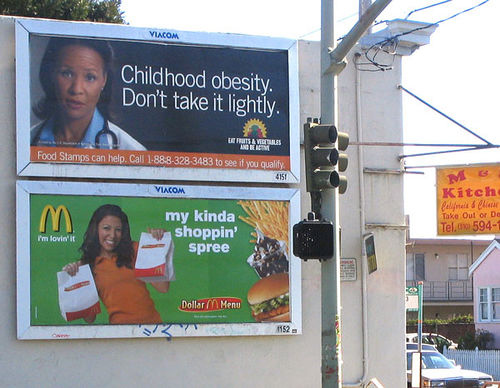According to the Center for Disease Control, one out of every three Americans is now considered obese. On the surface, this is a staggering number, but it’s important to understand that the classifications for obesity have changed and can vary wildly based on race, gender, and age. The textbook, World Health Organization definition of obese is anyone with a body mass index over 35. This includes over 30 percent of American adults and nearly 18 percent of American children. In the past decade, government and non-profit public health organizations have tried to come up with solutions to the obesity epidemic that has plagued the country with mixed results. Though obesity is cited as one of the major reasons that more people are dying of heart disease and diabetes than ever before, the problem is really multi-faceted. What are public health programs getting wrong? Why has the number of overweight children doubled in 20 years? There are still so many challenged to be faced.
The Dangers of Stigmatizing Obesity
It’s vital to note the vast difference between public health campaigns to stop obesity and the diet industry. The diet industry isn’t necessarily a friend to public health, in fact it may often be the opposite. Weight loss programs and quick-fix workout plans make upwards of $20 billion per year in America, and if the obesity problem was solved, they would go out of business. How do fad diets work? Through preying on insecurity, shame, and stigmatization. That’s something public health can never do. A 2012 study by the International Journal of Obesity found that campaigns focused on stigmatizing instead of encouraging and empowering obese people often hinder healthy behavioral changes. They used a Georgia campaign that claimed “Being fat takes the fun out of being a kid” as an example. Science has consistently proven that negative messages of blame don’t work. Participants in the study said Michelle Obama’s anti-obesity campaign was the most positive they were exposed to.
The Blanket Treatment of Obesity
In June 2013, the American Medical Association decided to classify obesity as a disease. The ruling was controversial for many reasons, but it wasn’t because doctors advocate taing the personal responsibility factor out of obesity cases. Medical professionals warn against treating every obese patient the same. When designing public health campaigns, you can’t address all obese Americans as if they suffer from the same problems or live the same lifestyle. There are genetic and socioeconomic factors that contribute to obesity. There are obese patients who struggle with mental and physical illnesses, and there are those who are perfectly healthy. In fact, Forbes Magazine points out that 30 percent of medically obese people are actually in good cardio-metabolic health and may even be harmed by losing weight. Public health efforts need to know specifically who they are targeting, which should be the extremely obese, obese children, and those with economic, health, and environmental elements contributing to their overall condition. BMI alone is not an indicator of premature death.
Target the Food Industry
Many Americans have reacted to the obesity epidemic by shopping at Whole Foods and Trader Joe’s and spending a lot more money to eat kale chips and raw vegetables instead of fast food. But don’t forget that the gluten-free, all-natural food movement is a business, too. The Atlantic writes about the demonization of processed foods and how many of the health risks associated with it are myths. Of course, that doesn’t mean everyone should live off McDonald’s. It means that campaigns targeting the food industry are just as important or more as campaigns targeting individuals. Public health programs have the opportunity to shed light on many of the sources of obesity. A successful campaign in 2011 to stop junk food companies from marketing to children led to Disney pulling all junk food ads from its network and websites and increased pressure and actual lawsuits intended to make Nickelodeon do the same. These movements compel McDonald’s and other food brands like it to come up with low-calorie, healthy alternatives.
In the end, the biggest mistake public health programs can make is over-simplifying the problem of obesity. There are a myriad of sources and contributing factors, and there are many different levels of health in obese patients. The media may paint the obesity epidemic with a broad brush, but medical professionals such as those with an online masters in public health degree cannot afford to do the same. Whether working with one person or with giant corporations, every solution deserves to be considered.
Author Pam Rankin”> blogs for health blogs. Check out her most recent article on obesity at Twitter @PamRWrites.





